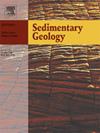Upwelling controls organic matter enrichment and organic carbon cycle in the shelf area of the Doushantuo Formation
IF 2.9
2区 地球科学
Q1 GEOLOGY
引用次数: 0
Abstract
As the oldest shale in South China with potential for exploration, the black shale of the second member of the Doushantuo Formation holds significant research importance and economic value because it records the organic carbon cycle during that period. Previous studies have suggested that the formation of the organic-rich black shale in the second member of the Doushantuo Formation was primarily controlled by an anoxic depositional environment. However, investigations of samples from shelf lagoons have revealed otherwise. In this research, microstructural observations, organic carbon content, elemental geochemistry and Corg-N isotopes of the black shale at the Qinglinkou section and well YD in the middle Yangtze were conducted. The results indicate that the formation mechanisms and paleoenvironment of organic-rich shale in the lower and upper halves of the second member are distinct. The presence of apatite and the characteristics of upwelling proxies suggest the occurrence of upwelling during the sedimentation period of the upper half of the second member. The research results indicate that upwelling directly enhances primary productivity levels during sedimentation in the upper half, bolstering the exchange of nutrients and elements within the water column, which facilitates organic matter enrichment and exacerbates the anoxia of deeper waters. In contrast, the organic matter enrichment in the lower half of the Doushantuo Formation's second member is conventional and is governed primarily by anoxic depositional environments; however, it lacks high productivity and is worse overall than the upper half. Moreover, because the water column is restricted, the organic carbon cycle in the lower half is slow and limited. The organic carbon cycle in the upper half benefits from the nutrients brought by upwelling, which results in better formation and preservation. The role of upwelling in altering the deep-water environment of shelf lagoons and in organic matter accumulation and the organic carbon cycle was emphasized in this study, providing guidance for the study of shale deposition globally during the same period.
上升流控制了陡山沱组陆架区有机质富集和有机碳循环
作为华南地区具有勘探潜力的最古老页岩,豆山坨地层第二层黑色页岩记录了该时期的有机碳循环,具有重要的研究意义和经济价值。以往的研究认为,豆山头组第二层富含有机质的黑色页岩的形成主要受缺氧沉积环境的控制。然而,对陆架泻湖样本的调查却发现了相反的情况。本研究对长江中游青林口剖面和 YD 井黑色页岩进行了微结构观察、有机碳含量、元素地球化学和钙镁同位素研究。结果表明,第二段下半部和上半部富含有机质页岩的形成机制和古环境各不相同。磷灰石的存在和上升流代用物的特征表明,第二段上半部的沉积期发生过上升流。研究结果表明,上涌直接提高了上半部沉积期间的初级生产力水平,加强了水体中营养物质和元素的交换,从而促进了有机物的富集,加剧了深层水域的缺氧状况。相比之下,豆山沱地层第二段下半部的有机质富集是常规的,主要受缺氧沉积环境的影响;但其生产力不高,整体上不如上半部。此外,由于水柱受到限制,下半部的有机碳循环缓慢而有限。而上半部的有机碳循环则得益于上升流带来的营养物质,从而更好地形成和保存有机碳。本研究强调了上升流在改变陆架泻湖深水环境、有机物积累和有机碳循环中的作用,为同期全球页岩沉积研究提供了指导。
本文章由计算机程序翻译,如有差异,请以英文原文为准。
求助全文
约1分钟内获得全文
求助全文
来源期刊

Sedimentary Geology
地学-地质学
CiteScore
5.10
自引率
7.10%
发文量
133
审稿时长
32 days
期刊介绍:
Sedimentary Geology is a journal that rapidly publishes high quality, original research and review papers that cover all aspects of sediments and sedimentary rocks at all spatial and temporal scales. Submitted papers must make a significant contribution to the field of study and must place the research in a broad context, so that it is of interest to the diverse, international readership of the journal. Papers that are largely descriptive in nature, of limited scope or local geographical significance, or based on limited data will not be considered for publication.
 求助内容:
求助内容: 应助结果提醒方式:
应助结果提醒方式:


